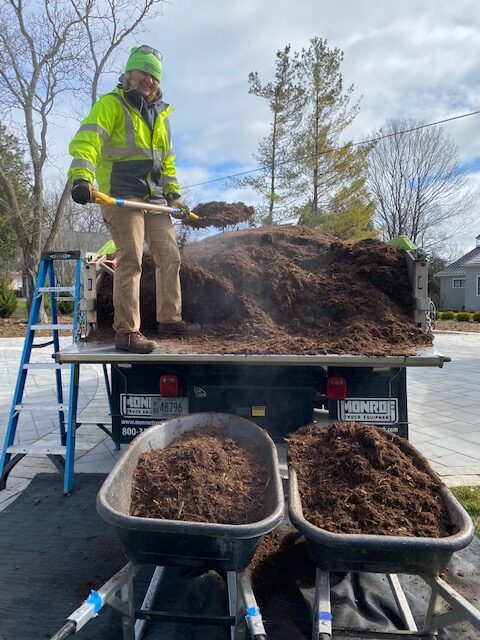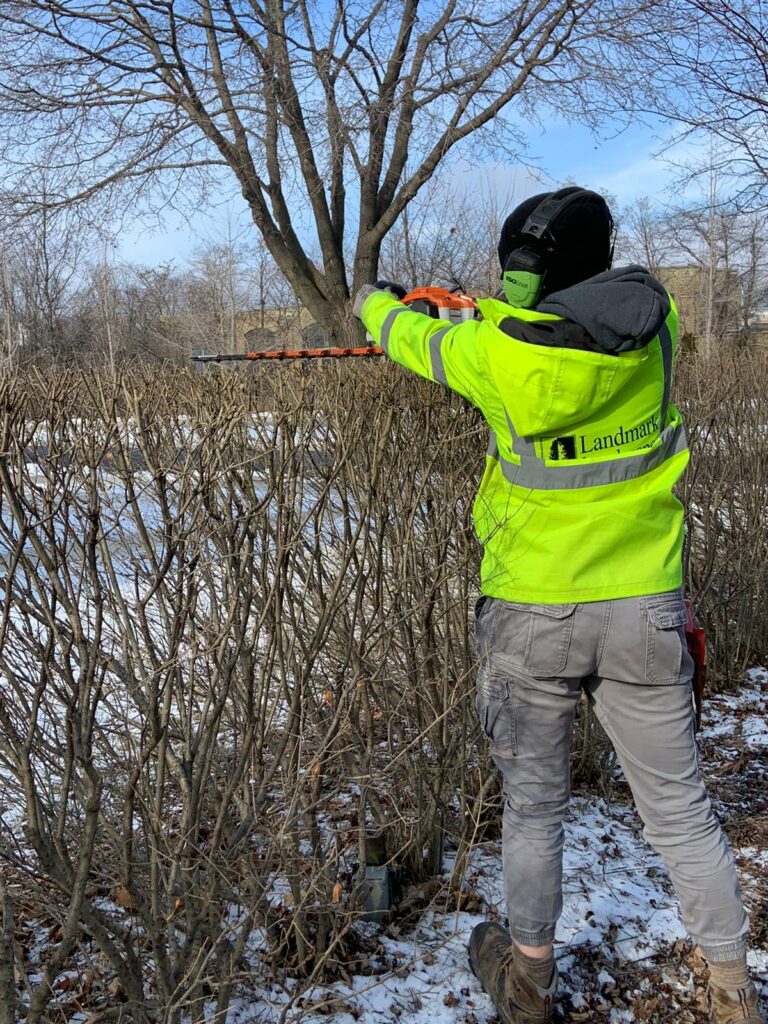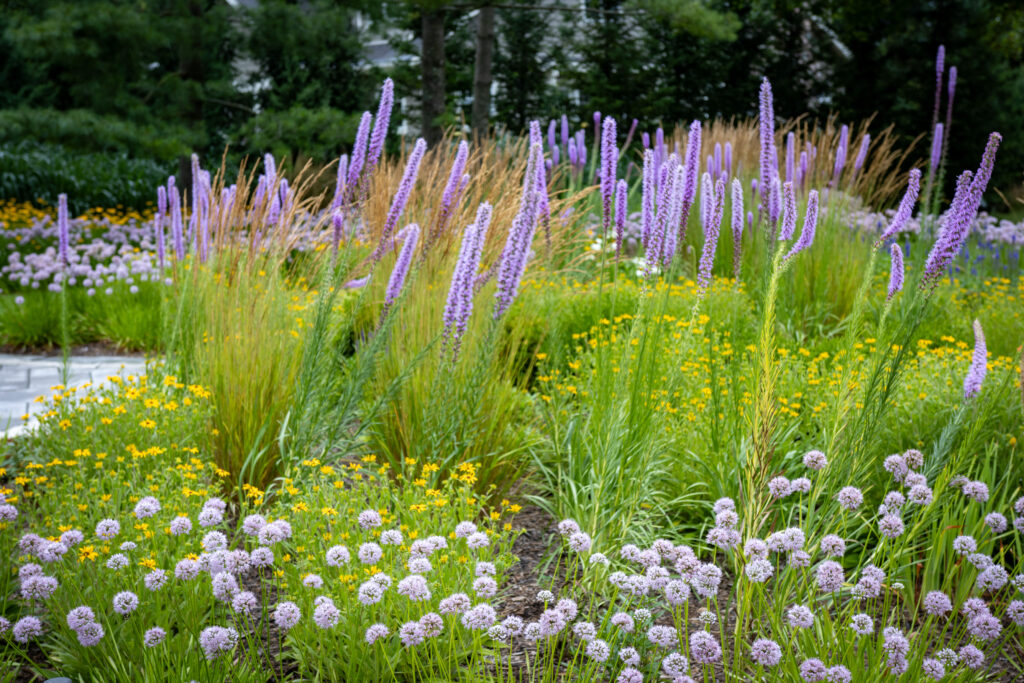
In Eastern Wisconsin, winters are no longer as predictable as they once were. Recent seasons have brought unusual patterns—sub-zero temperatures without snow cover, frequent freeze-and-thaw cycles, and warmer-than-average stretches—often in rapid succession. While these shifts may seem minor. They can have major consequences for your landscape, especially newly installed plants.
At Landmark Landscapes, we’ve seen firsthand how these weather swings can stress root systems, damage buds, and ultimately lead to costly plant replacements. The good news? With proper preparation, you can significantly improve your garden beds’ chances of thriving through winter.
Mulch for Insulation, Not Just Aesthetics
Mulch is one of the most effective tools for protecting your plants in a changing winter climate—and its benefits go far beyond aesthetics. It acts as a protective blanket over the soil. Keeping temperatures more stable and shielding roots from extreme cold.
In winters with deep, consistent snow cover, nature provides this insulation for free. But in recent years, SE Wisconsin has seen long stretches of bare ground during sub-zero temperatures. Therefore, leaving roots exposed to damaging cold. A fresh mulch layer in the fall—or a top dressing over existing mulch—creates an added layer of defense against these harsh conditions.

Aim for a 2–4 inch layer of shredded bark. Too little mulch won’t insulate effectively, and too much can smother plants.
A fall top dressing also has the advantage of refreshing the appearance of your beds. It can give them a clean, finished look as they head into the dormant season. More importantly, it helps maintain a consistent soil temperature, reducing stress from the freeze-thaw cycles that can heave plants out of the ground.
Apply Transfilm to Evergreens
Evergreens continue to lose moisture through their needles all winter long—a process called transpiration. In late fall, applying an anti-desiccant like Transfilm creates a thin, protective coating on the foliage that helps reduce this moisture loss.

This is especially important in winters with strong winds, low humidity, and minimal snow cover, when evergreens can suffer from winter burn—a condition that browns and dries out needles. Treating trees and shrubs such as boxwood, holly, yews, and arborvitae in late fall can help them retain more moisture, reducing stress and improving their chances of emerging in spring with healthy, vibrant foliage.
Water Before the Ground Freezes
Late-season watering is essential—especially for evergreens, which continue to lose moisture in winter. Give trees, shrubs, and perennials a deep watering in late fall to help them head into winter well-hydrated. Dry roots are more vulnerable to freeze damage.
Protect Vulnerable Plants
Some plants—like marginally hardy perennials, young evergreens, or shallow-rooted shrubs—benefit from extra protection. Use burlap wraps or plant covers to shield them from drying winter winds and sudden temperature drops.
Avoid Premature Pruning

It may be tempting to tidy up everything before winter, but heavy pruning can stimulate new growth that’s easily damaged by frost. Save major pruning for late winter or early spring, when plants are still dormant.
Mind the Freeze-Thaw Cycles
Repeated freezing and thawing can push plants up from the soil, exposing roots. Check beds periodically in late winter and gently press any heaved plants back into the ground, adding mulch if needed.
Think Long-Term Plant Health

Choosing hardy, site-appropriate plants from the start reduces winter loss. Our team selects varieties suited to Wisconsin’s climate and microclimates, and we’re happy to recommend replacements that can better handle these unpredictable winters.
Proactive Preparation
As our winters continue to change, proactive preparation—especially mulching garden beds and protecting evergreens with products like Transfilm—can make all the difference in preserving your landscape. With the right care in late fall, your plants will be ready to handle whatever the season throws their way.
Contact Us
Landmark Landscapes of Sheboygan Falls, WI is a full-service landscape company. Based out of Sheboygan County, with a Green Lake, Wisconsin satellite office. We are centrally located and uniquely positioned to service the areas of Sheboygan, Elkhart Lake, Fond Du Lac County, Green Lake County, Ozaukee County, Manitowoc County, and Door County. We can manage your property with our Total Property Care system, and design and build projects large and small. Contact us today at 920-467-6442 to learn how we can care for you.